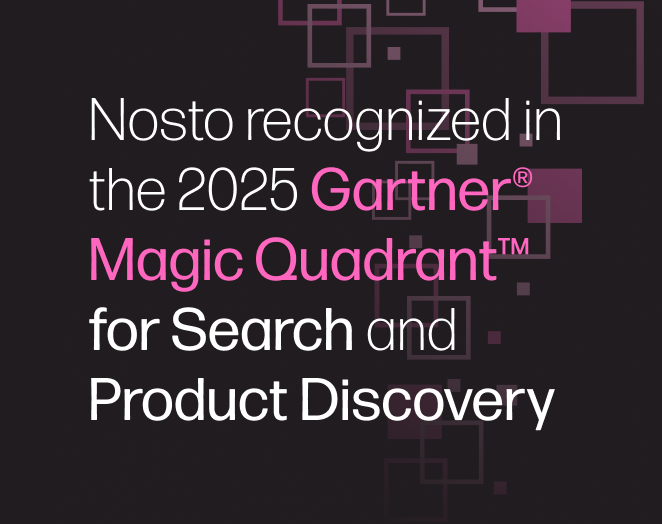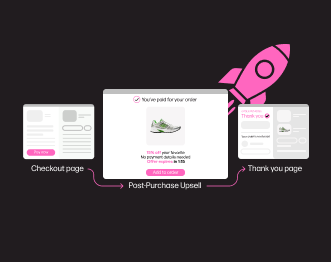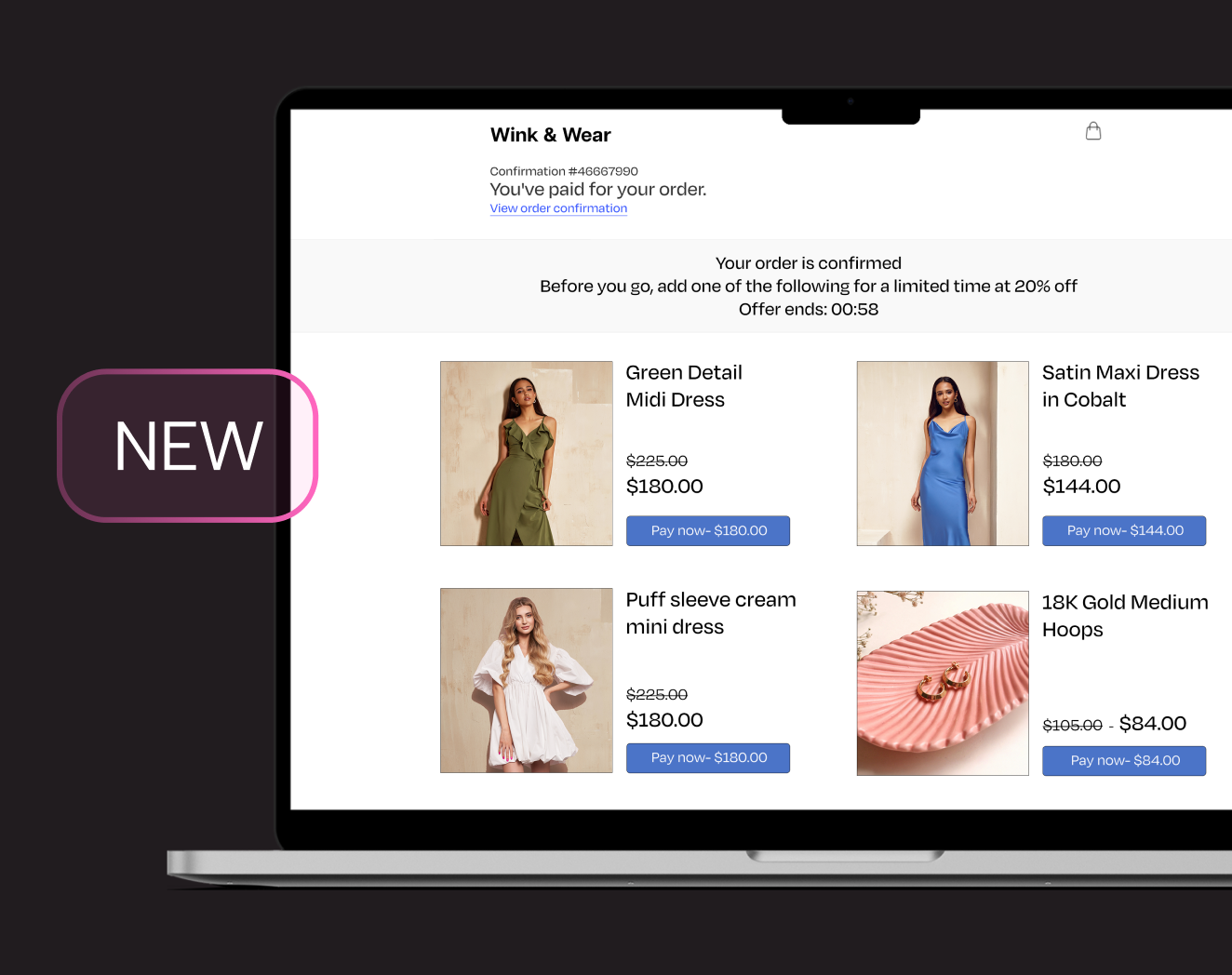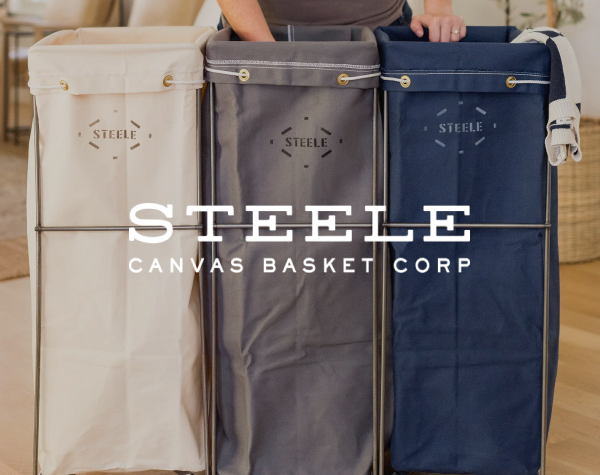Scaling Personalization with Content That Performs
Want to know the truth about content personalization? Consumers want it, marketers want to do it, some are doing it, some think they’re doing it, but consumers still aren’t really getting it. To borrow a line from the crusty captain in Cool Hand Luke, “What we’ve got here is a failure to communicate!”. But don’t worry, we’ll show you how marketers can personalize at scale.
Across industries, marketers have heard the buzz around creating personalized customer experiences and, according to our recent report, 92 percent of marketers believe their brands are delivering on that personalization promise. They believe they’re personalizing customer experiences across their multi-channel strategies — on organic (71%) and paid (58%) social, display advertising (47%) and email (46%). They believe they’re enhancing content experiences geared toward individual consumer wants and needs.
In reality, 55 percent of consumers either disagree or are ambivalent about whether the majority of brands provide personalized experiences. The majority of consumers don’t think marketers actually provide the personalized experiences that marketers think they’re delivering.
Stackla’s latest report highlights the gap that exists between what marketers deliver and what consumers want — and offers a solution that solves this communication issue.
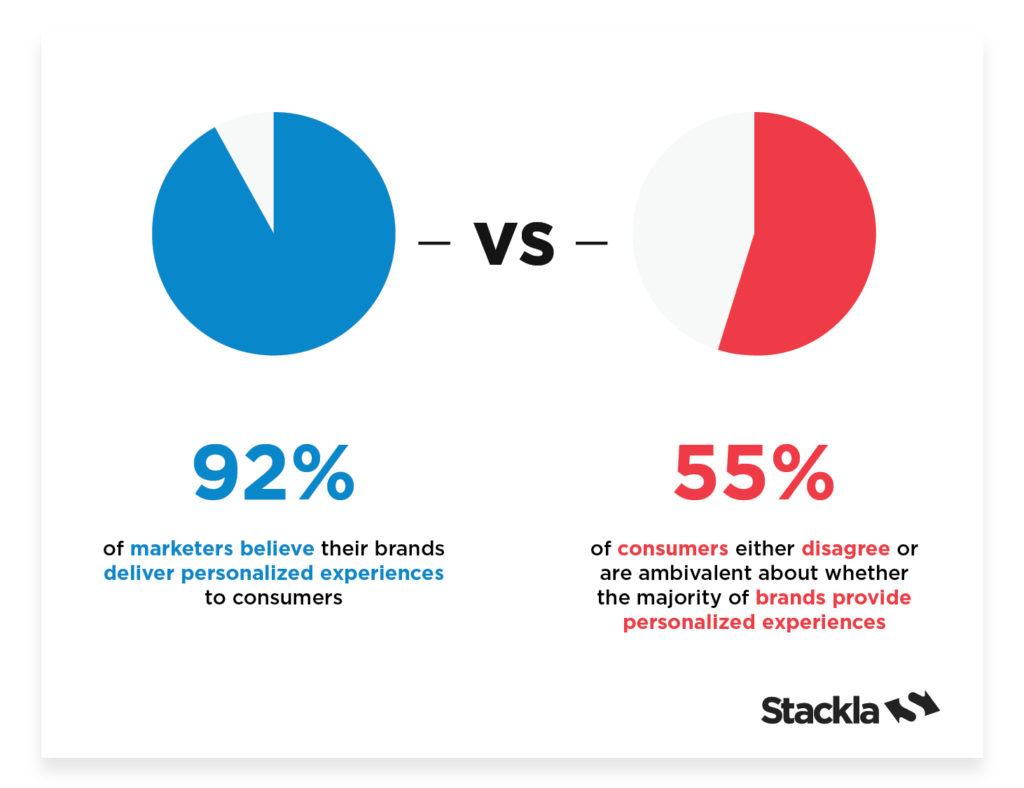
According to Forrester, 40 percent of marketers struggle with personalization efforts. These concerns are only exacerbated by marketers’ existing need to work overtime to deliver enough engaging content at a pace fast enough to satiate consumer needs. According to our recent Stackla report, 63 percent of marketers feel pressure to continually produce greater amounts of content at a higher frequency, and 43 percent say growing consumer segmentation and personalization are the most significant drivers of increasing content demands. And it’s easy to see why.
When we put the question to global marketers, 30 percent said the biggest hurdle to effectively delivering personalized experiences was sourcing enough content. The promise of personalization eludes marketers, not because they don’t have the right tools or data; it’s a scalable source of content that they lack.
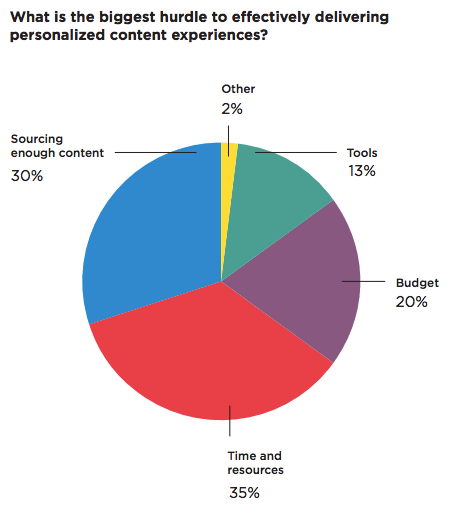
In attempting to create all of the content necessary to provide uniquely personalized experiences for segmented audiences, marketers are losing touch. Content experiences intended to be personalized end up not hitting the mark, and consumers aren’t fond of giving second chances when it comes to giving brands their loyalty.
Sixty-seven percent of people (73 percent of Gen Z and 70 percent of Millennials) say it’s important for brands to provide them with personalized experiences. And, a Deloitte study found that 36 percent of consumers also expressed interest in purchasing personalized products or services, and 48 percent would be willing to wait longer to receive those custom products. In 2018, 48 percent of consumers reported having left a brand’s website and purchased somewhere else due to a poorly-curated experience. Getting personalization right can be the difference between a purchase and a bounce.
It’s imperative that marketers bridge the content gap to provide the personalized experiences that consumers demand.
Leverage user-generated content to provide personalized content experiences at scale
Instead of wasting time attempting to create visuals that appear relevant to each of your distinctive audiences, tap into the wealth of relatable and unique content your customers are already organically creating online about your brand. By leveraging this vast volume of authentic visuals across all of the channels you’re seeking to personalize, you’ll be able to deliver more human and individualized content experiences that have been proven to resonate well with consumers.
Leading motor and home insurance provider, Royal Automobile Club of Queensland Limited (RACQ), also insures another important member of the family: people’s pets. Wanting to increase awareness about their pet insurance offerings and engage their community in a way that felt personal, RACQ developed a social media competition inviting members to submit photos and videos of their beloved cats and dogs for a chance to win up to $5,000.
Following the contest, RACQ sent all the entrants a personalized email, featuring the image they had submitted of their pet. Instead of these emails being ignored as just another email promotion, people actually replied back saying, “It’s so nice to see my dog in this email!”
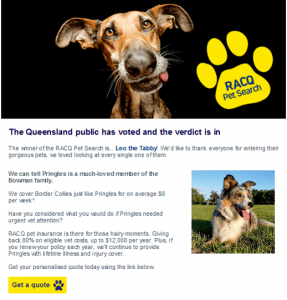
Those personalized UGC emails helped RACQ achieve an impression 45 percent click-through rate, and the competition helped generate 22,700 pet photos for RACQ. Going forward, they’re planning to use those same customer-created images to continue personalizing communications down the road.
With unique personal touches like these, RACQ leads by example in leveraging user-generated content to create engaging experiences that keeps customers coming back — even if they didn’t win the competition.
When customers can see themselves and people (and pets!) like them reflected back to them by a brand, they develop a more emotional connection that drives loyalty, inspiration and purchases.
Pay attention; your customers are creating the content they want to see
LUSH Fresh Handmade Cosmetics creates personal touches by implementing one simple strategy: treating their customers like the content creators they are. Instead of allocating a large portion of their marketing budget to ad spend, the LUSH team opts for a more organic personalization strategy. “I firmly believe that people create the content they want to see,” says Sabine Schirtz-Zinser, Community Manager at LUSH.
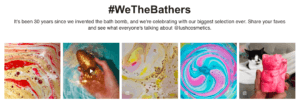
The team puts that customer-content-first philosophy into action by sharing imagery that’s similar to the content created by their most loyal advocates. This strategy takes a deep understanding of their customer base — and that level of personalization pays off. “If it means that a post will resonate on a really deep, personal level with 500,000 customers rather than resonate on a surface level with all of our four million followers, then those 500,000 people will have more buy-in to the brand and more buy-in to those products,” Schirtz-Zinser told me.
There are more physical touchpoints now than ever, and every person expects a personalized experience on each touchpoint. “You can’t just repurpose the same piece of content across six touchpoints; the customer will tap out and get bored,” said Schirtz-Zinser. “Instead, we need to utilize different pieces of UGC for specific audiences in a variety of different ways.”
By using the right user-generated images to answer questions from customers, showcase new products and nurture existing brand advocates — all while spending significantly less than they would on professional imagery — LUSH initiates personalized, trustworthy customer experiences right off the bat at each and every point of contact. As Schirtz-Zinser told me, “It’s important that we’re listening to our customers’ needs through the content they’re creating. Ultimately, they know what’s best for their skin. We wouldn’t be able to be as personalized or as authentic without their user-generated content.”
And, when our report found that 58 percent of people say content from friends, family and other consumers is the most influential when purchasing beauty, health or wellness products, it’s clear that LUSH’s personalization strategy is poised for success.
Prove that you understand (and can anticipate) customers’ unique wants and needs
When VisitScotland launched the world’s first pop-up, UGC-powered Instagram travel agency, they knew they were onto something good. What better way to feature real, relatable travel experiences in Scotland than by featuring photos taken by the actual travelers themselves?
Upon arrival to the agency, visitors were greeted with floor-to-ceiling digital screens displaying hundreds of Instagram photos from across Scotland. Visitors could select their favorite Instagram pictures posted by real travelers, and the staff then used these images to curate their an ideal Scottish holiday itinerary for them. No need to waste time sifting through stock photography or drain your budget in exchange for a handful of professional photos when there are already hundreds of thousands of authentic, unique and high quality images available to tap into.
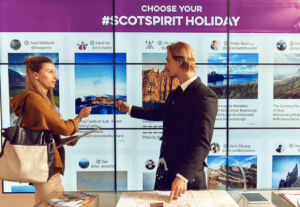
By creating a space where customers could visit and curate their own personal travel experience based on the lived experiences of other travelers just like them, VisitScotland could capitalize on a wide range of travel desires by customers of all kinds. This level of personalization drove results too — during the week of the pop-up agency, VisitScotland grew their average social following by 37 percent, and increased the volume of overnight visits by London Millennial by 34 percent.
Consumers, especially Millennials and GenZ, crave authentic, trustworthy content that they can pick and choose to ensure it’s personalized just for them — and brands that deliver those unique experiences in creative ways, like VisitScotland, are reaping the rewards.
Reflect the right content, at the right time, to the right customer
Popular hop-on hop-off tour company, Busabout, took a similar but more aggressive approach to creating customer-powered digital experiences. Busabout transformed their content strategy to feature 99 percent UGC, and in doing so, they created social and web experiences that provide customers with a look into every possible trip — completely customized to their travel preferences and desires.
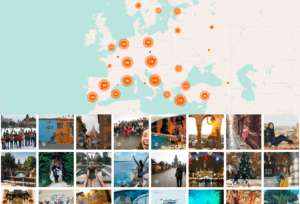
With features like location-specific user-generated content on every page and a live map on destination webpages, Busabout shows visitors where travelers are posting from in real time. Web visitors looking to plan a trip can simply click on a post that catches their eye or a location on the map that’s showing a lot of activity. As they choose their own adventure on the map, the interactive visual gallery dynamically displays the most relevant UGC imagery.
By making the switch to an almost completely UGC-powered site, Busabout has reduced their content costs by 65 percent while increasing online bookings by 33 percent.
It’s the power of a personalized booking experience, perfectly curated with real, relatable imagery — and it’s working.
With successful personalization, content drives perennial purchases
As technologies become smarter, personalization will play an increasingly essential role in brands’ content strategies. Leverage authentic user-generated content to create personal customer experiences that keep customers coming back for more.
To learn more about how marketers can personalize at scale, download the full version of our new report at Bridging the Gap: Consumer and Marketer Perspectives on Content in the Digital Age.

